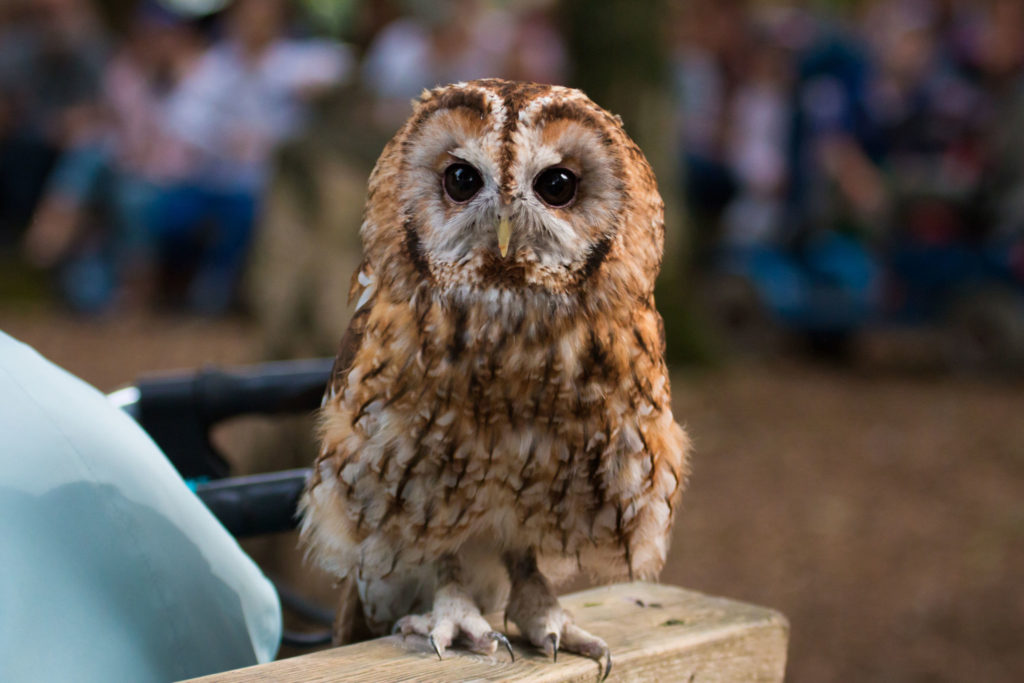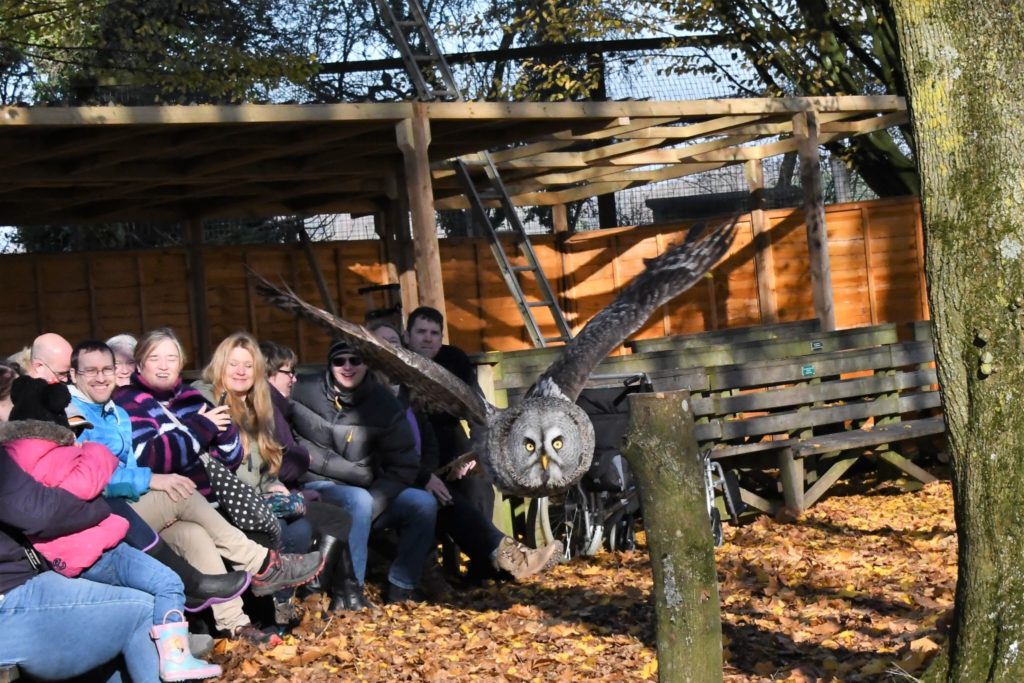
You may remember a recent post from Jess Green, a student studying Environmental Psychology at Surrey University. Jess conducted her BSc Psychology research at the Hawk Conservancy Trust; she investigated the effect of spending time in nature on our well-being with our visitors watching our Woodland Owl display. This is part of an ongoing research project we are conducting in collaboration with Surrey University. Read more about Jess’ research.
Jess has now completed her data analysis and has some interesting findings to share with us:
“Over the last few months, the data collected from the student photo rating survey in The University of Surrey Psychology labs (Study 1) and the visitor questionnaires from the Woodland Owl display at the Hawk Conservancy Trust (Study 2) has gone through a lengthy analysis process. The purpose of this study was to see how people’s well-being changed after spending time in natural environments with bird wildlife compared to those without. By using data analysis programs, we can be more sure of our results and that we’re making the correct conclusions.
“We expected to find that the closer and more engaged people were with wildlife, the greater their well-being would be.
“Initially, Study 1 in the lab, found the opposite effect. Students actually rated their well-being as higher after looking at images of natural environments without bird wildlife.
“This was not what was expected, so we looked to the results of Study 2, where we compared the well-being reported by visitors spent time watching the Woodland Owl display versus spending time in the natural setting of the arena without watching birds, to see if this effect was also found when people are in the physical presence of bird wildlife.
“Interestingly, Study 2 found that visitors did in fact rate their well-being as higher after spending time watching the Woodland Owl bird display! This supported what we expected to find.
“The difference in results between the two studies could be due to a number of factors. Students may have neutral feelings towards bird wildlife compared to the visitors of the Hawk Conservancy Trust, which may explain their lower ratings of photos of birds up close. Visitors go to the Trust to see the birds there, which may explain why their ratings for well-being were higher when immersed in a display, up close and personal with birds. Alternatively, it may be that the physical experience of watching a bird display, and seeing birds in real life, is more engaging and better for our well-being than simply looking at images behind a screen.
“What is clear from the data is that spending time in nature, whether bird wildlife is present or not, is beneficial for our well-being. So, next time you have a free afternoon, why not take a walk somewhere in your local area and enjoy the natural environment – and keep your eyes peeled for any birds!
“Thanks again to everyone at the Hawk Conservancy Trust for your help and support with my project!”
~Jess Green

